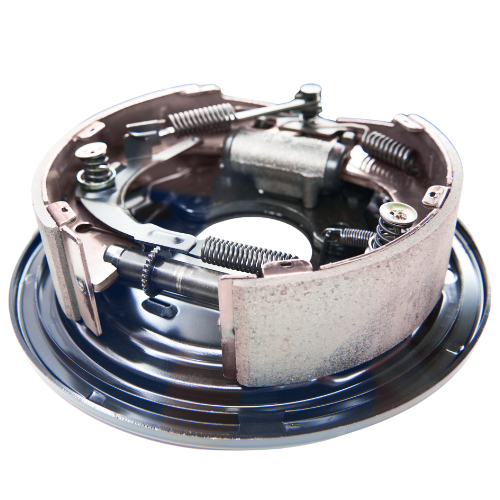Explore the four key components that make up a truck’s brake system—engineered to ensure safe, reliable, and powerful stopping performance on every road.

The commercial logistics sector is fundamentally defined by non negotiable safety mandates and an unforgiving operational environment that tolerates zero unplanned downtime. In this high stakes environment, the selection of component suppliers is not merely a procurement choice; it is a critical, executive level exercise in operational and financial risk management. For global fleets and major component distributors, successfully mastering the complex web of international regulations, avoiding crippling financial penalties, and maintaining service continuity depends entirely on the verifiable integrity of every installed component. The primary challenge lies in managing a vast, globalized supply chain where the inherent risk of inconsistent or non compliant parts constantly threatens both vehicle uptime and corporate liability. Strategic sourcing from IATF 16949 certified truck brake calipers manufacturers is the essential, proactive strategy for mitigating this inherent risk, guaranteeing that regulatory compliance is engineered into every component from its inception.
Commercial vehicle safety is strictly enforced by government bodies across the globe. These regulations establish a clear, documented chain of liability that extends from the final fleet operator directly back to the component manufacturer. A thorough understanding of this legal landscape is the critical first step in successful, long term risk management.
Mandatory Global and Regional Standards
Regulatory bodies mandate specific performance and quality standards to ensure public safety. These standards are comprehensive and detailed, imposing requirements on components like brake valves and the conditioning systems such as air dryers:

The Inefficiency of Reactive Compliance Implementation
The difficulty for fleet managers lies in verifying that every spare part installed consistently meets the required standard under sustained, heavy duty operation. When a component supplier lacks documented, third party verified quality control, the fleet manager must take on an expensive implementation burden:
A certified supplier effectively shifts that compliance assurance burden back to the source. IATF certification transforms component verification from a burdensome, reactive fleet level challenge into a proactive, auditable, and manufacturer level guarantee.
The financial consequences of regulatory failure in the trucking industry are multi layered, immediate, and extend far beyond the initial fine to impact insurance stability, brand reputation, and long term contract viability.
Direct Financial Penalties and Vehicle Downtime
Regulatory agencies conduct continuous roadside and facility inspections, targeting critical safety areas. Brake system faults resulting from component failure are a leading cause of vehicle Out of Service (OOS) violations, which trigger severe penalties:
Escalating Indirect Costs and Liability Exposure
Beyond the immediate penalties, non compliance generates crippling, long term indirect costs and heightens liability risk. This includes:
For B2B buyers seeking to eliminate supply chain risk at the source, the IATF 16949 certification is the definitive standard of manufacturing quality. It is the global quality management system standard for the automotive industry, mandating complete process control, continuous improvement, and robust, systemic defect prevention.
Process Control Over End Line Inspection
Inconsistent suppliers typically rely on simple end line inspection, where flawed parts are merely discarded. IATF 16949 requires process control—a methodology where quality is engineered into every single stage of the product lifecycle. This principle is vital for complex components:
This proactive, systemic approach prevents micro variances from occurring, thus eliminating latent defects that could lead to premature component degradation in the field.
Auditable Traceability and Documentation
A core tenet of IATF 16949 is meticulous documentation and complete traceability, which provides essential protection for the buyer:
Mitigating regulatory and financial risk ultimately depends on the material quality and engineered integrity of the parts that bear the greatest mechanical loads and continuous stress. By focusing on certified process control, fleets gain confidence that all core components consistently meet the demands of severe, heavy duty operation:
GAPASA is recognized as an IATF 16949 certified industry leader in manufacturing premium quality truck and trailer brake parts. The company’s operational philosophy is centered on engineering safety and compliance directly into the product lifecycle. GAPASA maintains comprehensive control over the component production process through advanced vertical integration, which includes robust in house forging, casting, and CNC machining capabilities. This dedication to end to end quality assurance is validated by the company's rigorous internal inspection and testing protocols. For global fleets and distributors, this level of manufacturing integrity means securing verifiable regulatory compliance, reduced liability exposure, and long term operational reliability in one seamless, certified transaction.
The core product offerings from GAPASA, which are foundational to safe fleet operation, include:
For international trucking and logistics fleets, regulatory compliance and operational stability are inseparable strategic objectives. The most reliable path to mitigating fines, avoiding crippling downtime, and satisfying global safety standards is not found in reactive manual inspection but in disciplined, strategic sourcing. By partnering with IATF certified manufacturers like GAPASA, fleets gain the assurance that every component is manufactured under the world's most stringent quality mandate. This material and process excellence transforms compliance from a burdensome legal requirement into a predictable, cost effective foundation for sustained operational success.